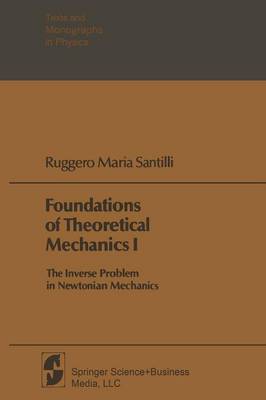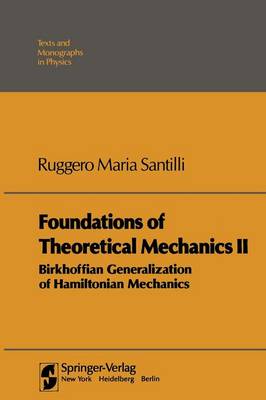Theoretical and Mathematical Physics
2 total works
The objective of this monograph is to present some methodological foundations of theoretical mechanics that are recommendable to graduate students prior to, or jointly with, the study of more advanced topics such as statistical mechanics, thermodynamics, and elementary particle physics. A program of this nature is inevitably centered on the methodological foundations for Newtonian systems, with particular reference to the central equations of our theories, that is, Lagrange's and Hamilton's equations. This program, realized through a study of the analytic representations in terms of Lagrange's and Hamilton's equations of generally nonconservative Newtonian systems (namely, systems with Newtonian forces not necessarily derivable from a potential function), falls within the context of the so-called Inverse Problem, and consists of three major aspects: l. The study of the necessary and sufficient conditions for the existence of a Lagrangian or Hamiltonian representation of given equations of motion with arbitrary forces; 2. The identification of the methods for the construction of a Lagrangian or Hamiltonian from given equations of motion verifying conditions 1; and 3 The analysis of the significance of the underlying methodology for other aspects of Newtonian Mechanics, e. g. , transformation theory, symmetries, and first integrals for nonconservative Newtonian systems. This first volume is devoted to the foundations of the Inverse Problem, with particular reference to aspects I and 2.
In the preceding volume,l I identified necessary and sufficient conditions for the existence of a representation of given Newtonian systems via a variational principle, the so-called conditions of variational self-adjointness. A primary objective of this volume is to establish that all Newtonian systems satisfying certain locality, regularity, and smoothness conditions, whether conservative or nonconservative, can be treated via conventional variational principles, Lie algebra techniques, and symplectic geometrical formulations. This volume therefore resolves a controversy on the repre- sentational capabilities of conventional variational principles that has been 2 lingering in the literature for over a century, as reported in Chart 1. 3. 1. The primary results of this volume are the following. In Chapter 4,3 I prove a Theorem of Direct Universality of the Inverse Problem. It establishes the existence, via a variational principle, of a representation for all Newtonian systems of the class admitted (universality) in the coordinates and time variables of the experimenter (direct universality). The underlying analytic equations turn out to be a generalization of conventional Hamilton equations (those without external terms) which: (a) admit the most general possible action functional for first-order systems; (b) possess a Lie algebra structure in the most general possible, regular realization of the product; and (c) 1 Santilli (1978a). As was the case for Volume I, the references are listed at the end of this volume, first in chronological order and then in alphabetic order.

